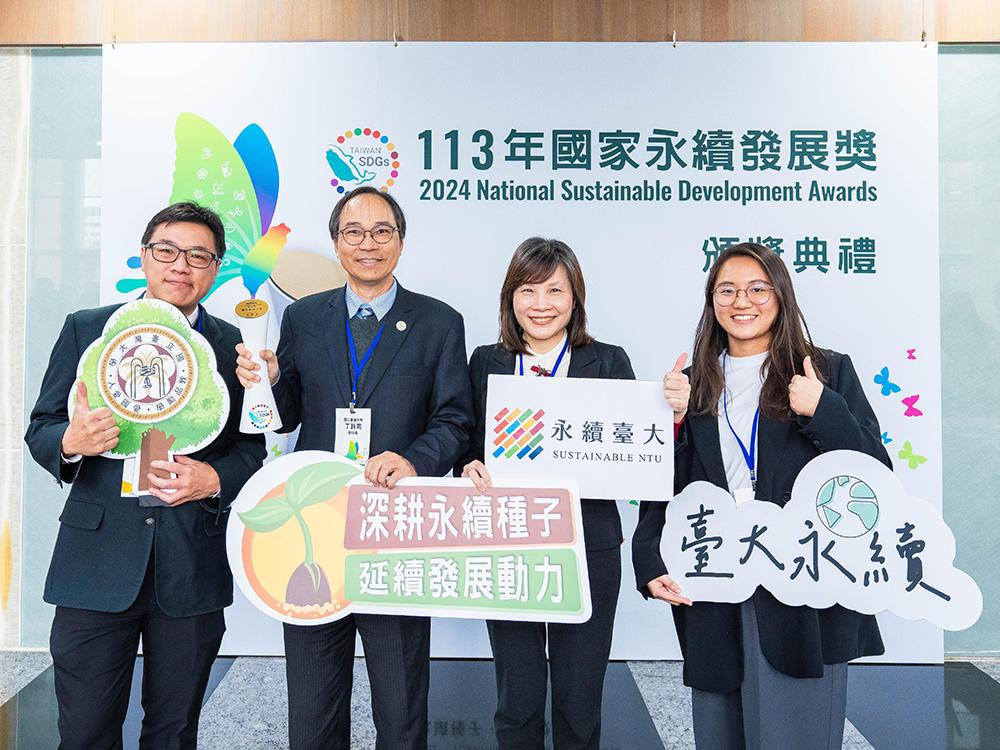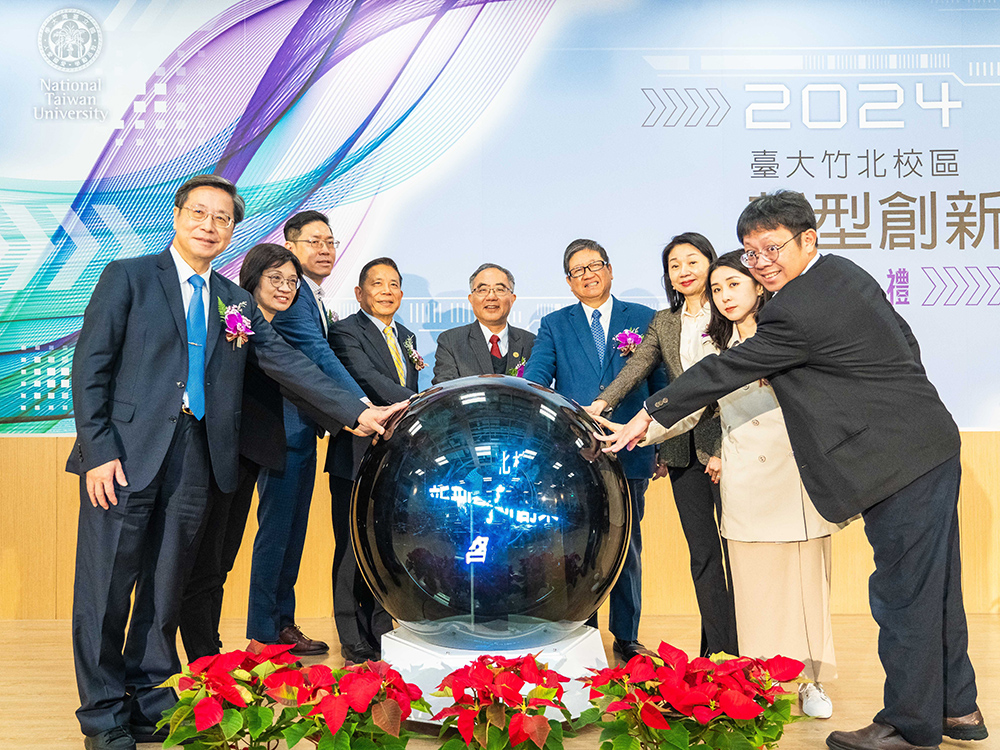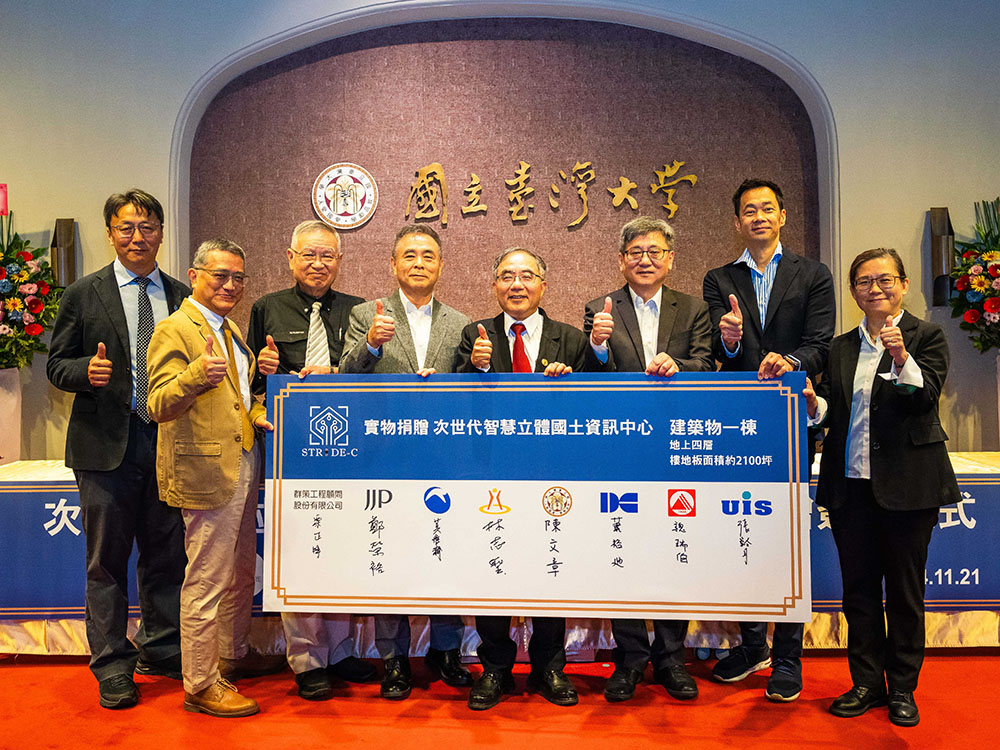
NTU wins the 2024 “National Sustainable Development Awards” for exerting influence in higher education
瀏覽器版本過舊,或未開啟 javascript
請更新瀏覽器或啟用 javascript
Spotlights
An Illustration of the smart pest monitoring networks and analysis of ecological models for pest control.
The platform is composed of a sensing layer, a data aggregation layer, a network layer and a data analysis layer.
Prof. Jiang interviewed by the Discovery Channel.
The College of Bioresources and Agriculture of National Taiwan University has been proactively making academic contribution to agriculture-related fields. The goal is to continue bolstering the technology of agricultural production for domestic development of bio-resources and the bio-industry. With Internet of Things (IoT) for smart farming as an example, this article will cover the fruitful results of the interdisciplinary, cross-departmental research by Prof. Joe-Air Jiang (江昭皚) of the Department of Bio-Industry Mechatronics Engineering and his team.
Core technology and system innovation
Prof. Jiang’s team has launched a platform called “Innovative IoT/WSN-based Monitoring Platform.” Given the ever-changing demands for monitoring field data in farmland, and the diversity presented by subjects being monitored, the researchers incorporated the forward-thinking information and communication technology (ICT) and wireless sensor network (WSN) into the IoT-based platform. With an innovative module as its core technology, the platform allows for long-distance, wireless monitoring of field data. The platform is composed of a sensing layer, a data aggregation layer, a network layer and a data analysis layer. This multi-layer technology renders the platform suitable for various monitoring purposes.
Different sensor modules can be combined into the front-end, WSN-driven sensing layer to meet specific monitoring purposes. Complete with wireless chipsets, this layer enables the collection of a huge amount of raw data from farmland.
Catering to different needs for research or monitoring, the platform’s modular design also means a wide application of the sensing layer to smart farming, ecological environments, and wide-area measurements for smart grids. Next is the data aggregation layer, which sets the each sensor up for sending back data in a quick, orderly manner. This layer also features core software designed for packet collision avoidance, effective routing and extended network lifespan. Network layer, on the other hand, acts as the medium that returns the front-end data to the data analysis layer. The research team has developed and integrated frequently-used communication protocols according to various transmission distances. The platform’s back-end data analysis layer enables the storage and mining of data of various types. By capturing useful information based on different sensing data, a data analysis model can be established. The purpose is to analyze what has been captured and predict what will be observed. The platform has been applied to smart pest monitoring networks, analysis of ecological models for pest control, treatment of colony collapse disorder (CCD), visual monitoring of rare birds, and an intelligent and automatic orchid greenhouse monitoring system. In so doing, the team’s achievements have laid a foundation for Taiwan’s smart farming .
Smart monitoring and eco-models for pest control: a case in point
The researchers combined mechatronics integration, mechanism design, GSM-based wireless texting, GPS technology and wireless sensing into the platform. The result is an autonomous multi-tasking pest control system that features accurate early warning.
The insects being monitored are the oriental fruit fly, Bactrocera dorsalis (Hendel), and Spodoptera litura (Fabricius), two of the most common pests that infest farmland in Taiwan. The researchers have built 27 networks for plant disease control at agricultural sites across the island. By collecting long-term data of pest infestation, and its corresponding environmental/meteorological factors, the research team’s monitor center used cloud computing to conduct the mining and analysis of big data so obtained. This enables immediate access to such information as hot spots of pest infestation. This surveillance function is also integrated into a geographic information system (GIS). The aim is to show how pest populations are distributed geographically as a big part of the team’s pest control efforts and data analysis. In addition, Prof. Jiang and his team also utilized a staggering amount of heterogeneous data obtained these years for statistical modeling. The resultant model —coupled with multivariate analysis— demonstrated how climate changes are impacting the populations of oriental fruit flies, and what role self-control is playing in the ecosystem where the flies live. The above system and analysis will help farmers and agricultural authorities keep their fingers on the pulse of fruit fly populations that vary with climate changes. Weather forecast data can also be incorporated to build a system that predicts pest infestation for immediate warning of an increase in fruit fly populations in seven days. The research team is looking to this system as a comprehensive preventive measure to perfectly control pest damage for domestic agriculture.
Cross-departmental collaboration, interdisciplinary intelligence
Prof. Jiang once worked with Prof. En-Cheng Yang (楊恩誠) and Prof. Toshinori Okuyama (奧山利規) of the Department of Entomology. The trio performed preliminary research on topics including “smart pest monitoring network and analysis of ecological models for pest control,” “colony collapse disorder (CCD)” and “non-lethal effects of imidacloprid to honey bee.” Additionally, Dr. Jiang also studied the subject of “application of automatic monitoring technology in avian behavior and habitat monitor” together with the School of Forestry and Resource Conservation, with Prof. Hsiao-Wei Yuan (袁孝維) and Prof. Chi-Rong Chiu (邱祈榮) as co-investigators. Another interdisciplinary project was conducted with the Department of Geography, where Prof. Chih-Hong Sun (孫志鴻), Prof. Tzai-Hung Wen (溫在弘) and Prof. Jehn-Yih Juang (莊振義) worked with Prof. Jiang. They published two studies, titled “Framework of a Spatially-Enabled Intelligent City” and “An Urban Environmental Sensing Infrastructure with Crowdsourcing and Spatial Big Data for Early Warning of Critical Conditions,” respectively. And there is a study titled “Research and Development of Wide-Area Monitoring and Control Technologies.” Co-authored by Prof. Chih-Wen Liu (劉志文) of the Department of Electrical Engineering, the research explored smart grid and related technologies. These cross-departmental efforts bear witness to how Jiang’s team has successfully applied IoT and ICT to agricultural technology and environmental protection.

NTU wins the 2024 “National Sustainable Development Awards” for exerting influence in higher education

Prof. Chih-Kung Lee of NTU’s Institute of Applied Mechanics elected NAI Fellow

NTU Launches Startup Initiatives at Zhubei Campus

2024 NTU-KU-UHH Trilateral Symposium: Uniting for Sustainable Future and Next Generation

Signing Ceremony for the donation of “Next-Generation Smart 3D Geospatial Information Center” at NTU Zhubei Campus
Current Spotlights